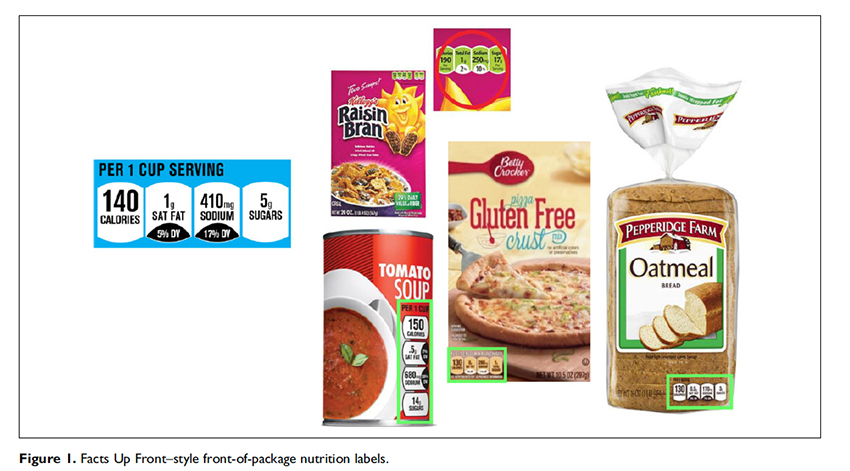I rarely see anyone looking at food labels. We make our food choices based on taste, price, and our sense of what might be good or bad for us. This behavior on our part has been problematic for those pushing regulations over nutritional labeling, the “good or bad for us” – after all of their effort; we continue to make unhealthy choices. A new study looks at an abbreviated nutritional summary, put on the front on the package (FOP) where it can’t be missed, but looks at the supply side (manufacture), not the demand (sales). They conclude that those FOP labels cause manufacturers to create healthier products.
The study employed a dataset including 22,000 products in 40 categories with changing nutritional profiles over 16 years, looking at how nutrient values changed in response to the introduction of FOP labeling. In a moment of rare candor, the marketers point out that the standard nutritional labels have had little impact on consumer’s nutritional choices – few of us chose food based on its thiamine levels. FOP labeling reduces the information to the top public health concerns, reducing all that extraneous informational clutter. The top four are calories, saturated fat, salt, and sugar.

Over time, the presence of these voluntary labels resulted in 13% fewer calories, saturated fats, sugars, and 4% less salt for these products overall. More importantly, it took only one manufacturer to get the ball rolling. The reductions were greater for
- Premium brands were price was not a factor
- Brands within a narrow marketing category, where differentiating one’s product from the competition was more critical to purchasing decisions
- Brands that were more unhealthy initially
- Brands with a great deal of competition
Competition for sales makes manufacturers more responsive, especially for manufacturers who, in this case, voluntarily chose to compete, tilting the playing field in their favor through labeling.
The drumbeat of nutritional public health (yes, public health encompasses more than pandemic responses) has stressed the four categories in FOP labeling as the most critical to consider. Manufacturers who can reformulate and compete within those categories do so; their competitors follow suit across various competitions from premium to commodity products.
I would hasten to point out that it is not the label that causes the change, but the competition the label fosters — a competition based on what is relevant to consumers in their decision-making. Supply and demand are entangled with one another. Competition is a word describing that entanglement.
A lesson here for healthcare spending
Healthcare coverage is a competitive market, just like foods. There are premium plans, plans with specific coverage, barebone plans, and plans, like Medicare Advantage, similar to commodities competing on side benefits or price. The annual search and churn within the healthcare insurance market is underway; you’ve seen the ads interspersed with those political ads that are thankfully now gone (except in Georgia). What are the salient concerns of those of us purchasing healthcare coverage? Primarily who and where the care is provided and its costs to us.
Perhaps we can take a lesson from nutritional labels and have insurance companies provide their own FOP labels indicating your premium, anticipated out-of-pocket costs, where the care is covered, and if your physician is in the mix. The insurance companies already have this information; they use it to set the annual premiums, co-pays, and deductibles; it is not a new regulatory burden. What would be required is that instead of hiding that information on the back of the container along with the benefit of, say paperless transactions, the thiamine of insurance labeling, these salient concerns were summarized up front where you could easily find them. This study suggests that this form of transparency would allow competition to exert its invisible hand and give consumers what they want, lower prices for care that is geographically and emotionally accessible.
Source: Competitive Effects of Front-of-Package Nutrition Labeling Adoption on Nutritional Quality: Evidence from Facts Up Front–Style Labels Journal of Marketing DOI: 10.1177/0022242920942563




